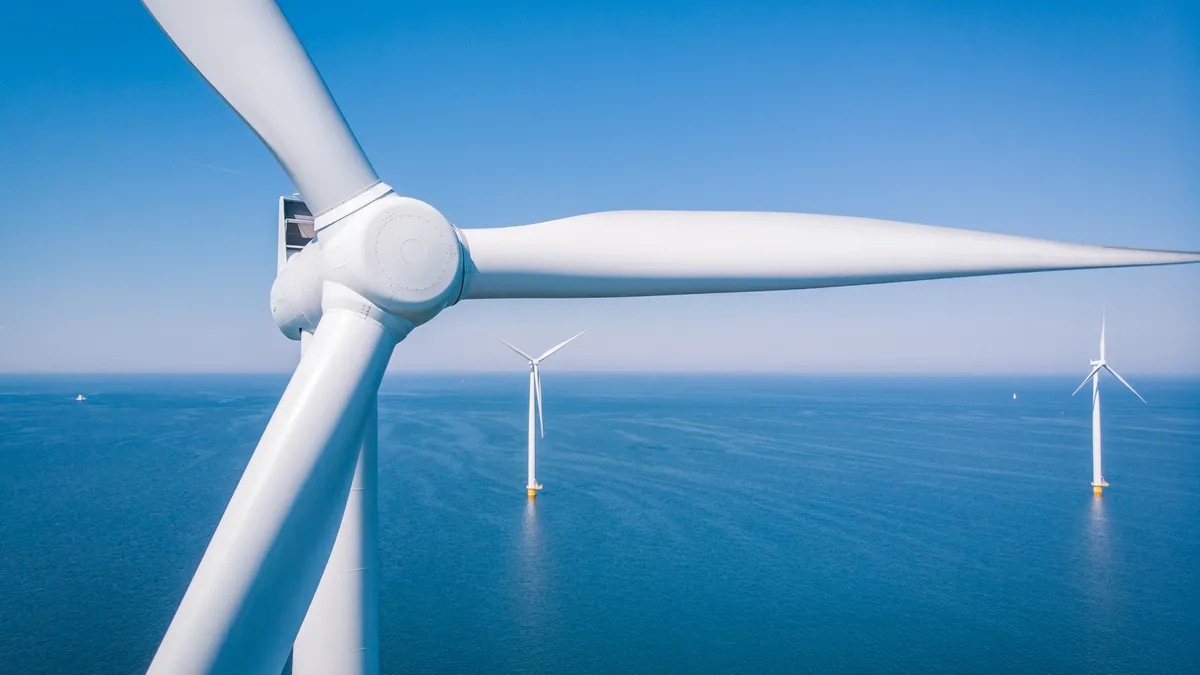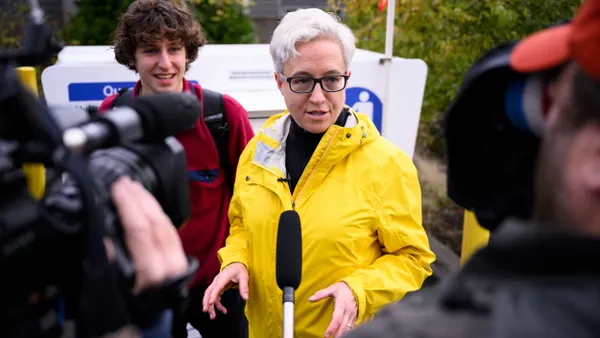Dive Brief:
-
Achieving the Biden Administration’s goal of cutting floating offshore wind development costs by 70% will require advanced manufacturing and materials science, agency leaders said during a Wednesday afternoon roundtable at the Department of Energy’s Floating Offshore Wind Summit.
-
Marine environments create harsh conditions that call for more durable materials such as advanced composites, said Susan Margulies, who heads the Directorate for Engineering at the National Science Foundation. The NSF recently launched a call for proposals for research initiatives that could lead to the discovery of new materials.
-
Manufacturing these materials, as well as other needed components, will present another key challenge, Margulies said. “Rather than constrain innovation to the manufacturing we have today, we should explore the frontiers of manufacturing itself.”
Dive Insight:
Developing floating offshore wind in the U.S. could open new opportunities for areas of fundamental scientific research such as materials, speakers at the Wednesday afternoon roundtable on research and development activities agreed.
To cut floating offshore wind costs, DOE Office of Energy Assistant Secretary Gene Rodrigues said the U.S. will need research and demonstration projects in a number of areas — particularly materials science, but also component design, better planning approaches, and new tools for grid communications, controls and security.
“The need to make advancements relies on advances in fundamental science,” said Asefaw Berhe, director of the Office of Science within the DOE.
To that end, the Office of Science has made recent financial awards to projects studying advanced composites for the manufacturing of wind turbines, and building artificial intelligence systems to help identify materials that might improve the performance and efficiency of wind turbines. Panelists said new materials are necessary to improve the durability of floating offshore wind turbines, to reduce their structural weight, and to reduce the carbon footprint associated with building them.
Those research opportunities, in turn, represent an opportunity to attract diverse young people to science as a profession, Berhe said.
Panelists also identified the potential environmental impact of floating offshore wind turbines as a key area of future research. With some foresight and planning, every offshore wind turbine could double as a research array for collecting data and studying marine ecosystems, according to Rodney Cluck, head of the environmental sciences division of the Bureau of Ocean Energy Management.
“Really, what we are looking at here is more than just a clean energy future — it’s a real opportunity that could advance our understanding of the ocean by pulling together and pooling our resources and partnering on long-term monitoring,” Cluck said. “This data would allow us as a nation to be...better stewards of our natural resources at the same time we are challenged by climate change.”














